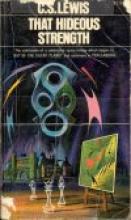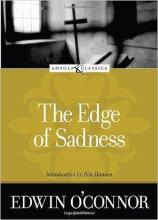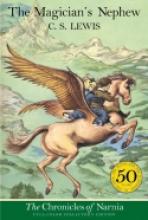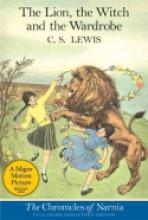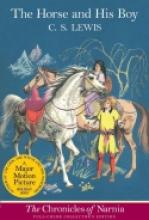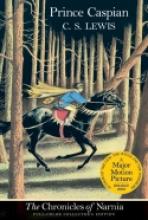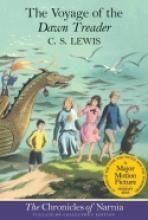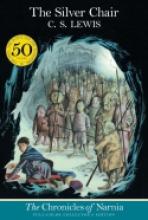Literature
That Hideous Strength
The Edge of Sadness
At first glance, Edge of Sadness by Edwin O’Connor is a walk down memory lane. A memory of the American Catholic church before Vatican II, before the priest scandals. A lovely, nostalgic read. But the thing that makes this book worthy of the Pulitzer Prize it won in 1962 is the fact that O’Connor’s story is truly ageless. The characters are drawn from humanity, painted with the author’s word-brush so lovingly and carefully that by the end of the book you know each of these folks intimately. And, you like them, in spite of their less-than-virtuous actions. The story centers around a native Bostonian priest, Father Hugh Kennedy, a recovering alcoholic who guides us through the joys and troubles of his life in late 1950s Irish Catholic Boston. Seeing all through the eyes of this humble pastor, the reader is introduced to a wealth of characters: self-made first-generation Irish folks, political hopefuls, fellow priests and “outsiders” such as his Polish curate and a non-Irish, non-Bostonian bishop. The prejudices unveiled are humanely drawn; there's something redeeming in every character, something that Father Hugh finds regardless of their overt actions. Through the book winds a thread of Father Hugh’s own self-examination, a thread that is tested and strengthened by every encounter; encounters which lead Father Hugh just to the brink of despair, to the edge of sadness. But, grace pulls him back from the brink each time. This book, although a hefty 600-plus pages, grips the reader from the first page. It reads quickly and elegantly as the humor and pathos of Catholic American life transcends the era and location in which the story is set. This book is a great read because it shows how American Catholicism was and how it can still be; how the Church is run by humans (who sometimes make mistakes) trying to minister to humans (who sometimes make mistakes) – all with God’s grace and beneficence helping us through. Loyola Classics has added ten provocative questions to the end of the book for the edification of the reader or to facilitate discussion within a book club. These would make for a wonderful “study guide” if used with a teen reading club or individual book study.
The Chronicles of Narnia
The Magician's Nephew
At first glance, this is a story of magic, drama and journeying to other worlds. Digory and his friend Polly, who live in London in the early part of the 20th century, accidentally discover some weird experiments being performed by Digory's Uncle. Too cowardly to test out his own experiments, he sends them off unwillingly to an adventure in an unknown world.
They find themselves in an enchanted place - a "wood between the worlds" - a quiet, peaceful place filled with trees and pools of water. They soon discover that each pool will take them into a different "world." When they decide to explore one of these worlds, their real adventure begins - and they're in for a wild ride.
The story is, primarily, about the founding of a new world - Narnia. The two children witness its creation and its initial struggles with evil - not unlike those of our own world. Naturally, it presents some of the history that leads up to the Lion, the Witch and the Wardrobe as well.
Like the Lion, the Witch and the Wardrobe, children need not be fully aware of the story's allegorical significance in order to enjoy and benefit from the story. On a simpler level, the story highlights truths about character and consequences that will remain with them for a lifetime.
The Lion, the Witch and the Wardrobe
Four British children - Peter, Susan, Edmund, and Lucy, are taken to the country to live with an old Professor during World War II, as London was quite unsafe for children. The professor is somewhat eccentric, but kind, and permits them to explore his large estate. While hiding in an old wardrobe, the youngest, Lucy, is amazed to discover that there is no back to the wardrobe - as she pushes past more and more coats, they become scratchier and colder and she begins to realize that she's no longer in a wardrobe. She's in the middle of a snowy forest. Lucy has discovered a strange, unknown world where amazing adventures await her and her siblings.
Long beloved by children the world over, this is a tale of innocence, difficult lessons learned, adventure, friendship and love. Underneath and not immediately apparent to children is an allegory. Some truths about our own world can be seen more clearly through a story that takes place elsewhere.
Narnia is in the grip of the White Witch. Although she promises happiness and delightful things, those who follow her are miserable, and the entire land is immersed in an eternal winter - always winter and without Christmas. The mysterious Aslan, a lion who is greatly feared by the witch, comes to Narnia and things begin to change.
Most parents will quickly realize that Aslan is a figure for Christ who saved the world from the tyranny of sin and death (represented by the witch). There are many interesting details that correspond with this allegory. Although I read the series many times as a child, I wasn't fully aware of the allegorical significance until much later. I wouldn't spoil it for children by sitting down and explaining it to them. The Christian allegory will probably be more meaningful if they are permitted to discover it for themselves.
The story (as well as others in the series) is appropriate as a read-aloud even for rather young children and is written at a mid-grade-school reading level. (Strong readers may be interested in tackling it even earlier.) The book is most powerful, I think, when it can be first introduced in the very simple way that young children enjoy such a book.
The Horse and His Boy
Prince Caspian
The author puts you right in middle of a thrilling adventure; made more mysterious because children now are looking upon their previous adventures as "ancient history". For my oldest daughter, reading this in early grade school kindled an interest in history and a reverence for "old things" that has remained quite strong years later.
The Voyage of the Dawn Treader
The Silver Chair
Back to the plot... the young prince is being held captive, by flattery and brainwashing in an underground kingdom, out of the light of the sun. As with other books in this series, there is a fascinating meld of themes from classical literature and Christian virtues and ideas. This one in particular is reminiscent of Plato's "Cave Analogy". The allegory and adventure are both very strong as the two children and some interesting Narnia natives help to overthrow this evil kingdom.

